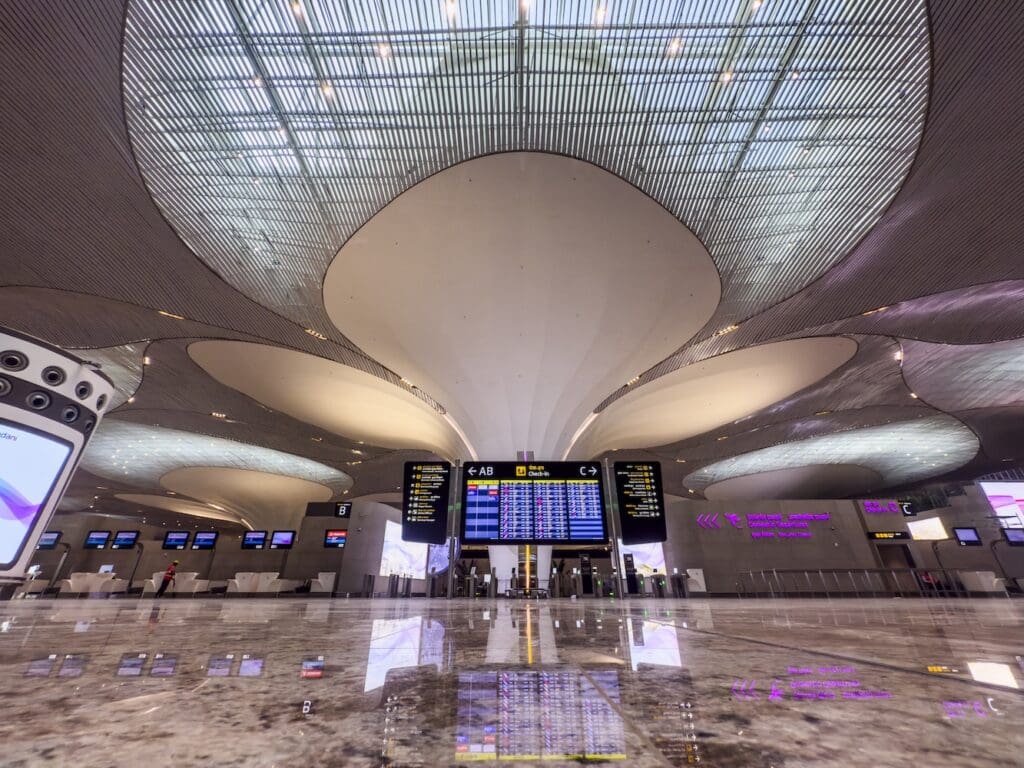Navi Mumbai International Airport (NMIA) is scheduled to commence operations in the coming months, and the airport has released new images revealing the terminal design, architectural features, and operational infrastructure at the new site.
The visuals provide a detailed look at the airport’s scale, functionality, and passenger amenities ahead of its imminent launch.
NMIA is being developed by Navi Mumbai International Airport Private Limited (NMIAL), a special purpose vehicle established for the design, construction, operation, and expansion of the greenfield airport.
The project is a public-private partnership, with Mumbai International Airport, a subsidiary of Adani Airports Holdings, holding a 74% stake, and the City and Industrial Development Corporation of Maharashtra (CIDCO) holding the remaining 26%.
Navi Mumbai International Airport built for growth
Phase one of the airport features a single integrated terminal handling both domestic and international operations, with a planned capacity of 20 million passengers per year.
Subsequent phases will expand the facility to four terminals, eventually accommodating 90 million passengers annually.
The airport’s design draws inspiration from the lotus flower, India’s national emblem, with 12 sculptural feature columns and 17 mega-pillars supporting the roof canopies.
Terminal 1 includes 66 check-in counters, 22 self-baggage drop stations, 29 aerobridges, and 10 bus boarding gates, alongside extensive retail and dining options, including 110 F&B and retail outlets, duty-free space, and immersive digital art installations.

NMIA will eventually feature two parallel Code F-compliant runways, each 3,700 metres long and 60 metres wide, as well as 245 passenger aircraft stands, seven cargo stands, and 79 general aviation stands.
Cargo facilities are designed for full automation, temperature-controlled storage for perishables and pharmaceuticals, and high-security zones for valuables and dangerous goods.
The airport will handle up to 0.5 million metric tonnes of cargo annually in phase one, increasing to 3.2 million tonnes at full capacity.
Built with passengers and sustainability in mind
Passenger convenience and digital efficiency are central to NMIA’s operations.
The airport will deploy 5G connectivity, Digi Yatra contactless processing, automated baggage handling, and integrated apps for stakeholders and passengers.
Amenities include dedicated child zones, VIP lounges, short-stay transit hotels, and direct luggage delivery services.
Sustainability is a priority, with solar power generation, rainwater harvesting, electric vehicles, low-flow water fixtures, and passive cooling integrated throughout the terminal.

Located in Ulwe, approximately 37 kilometers from South Mumbai, the airport benefits from planned highway and metro links to the city and proximity to ports and industrial areas.
Once operational, NMIA is expected to relieve congestion at Mumbai’s existing airport, support new airline routes, and strengthen the city’s position as a major aviation hub in Asia.


